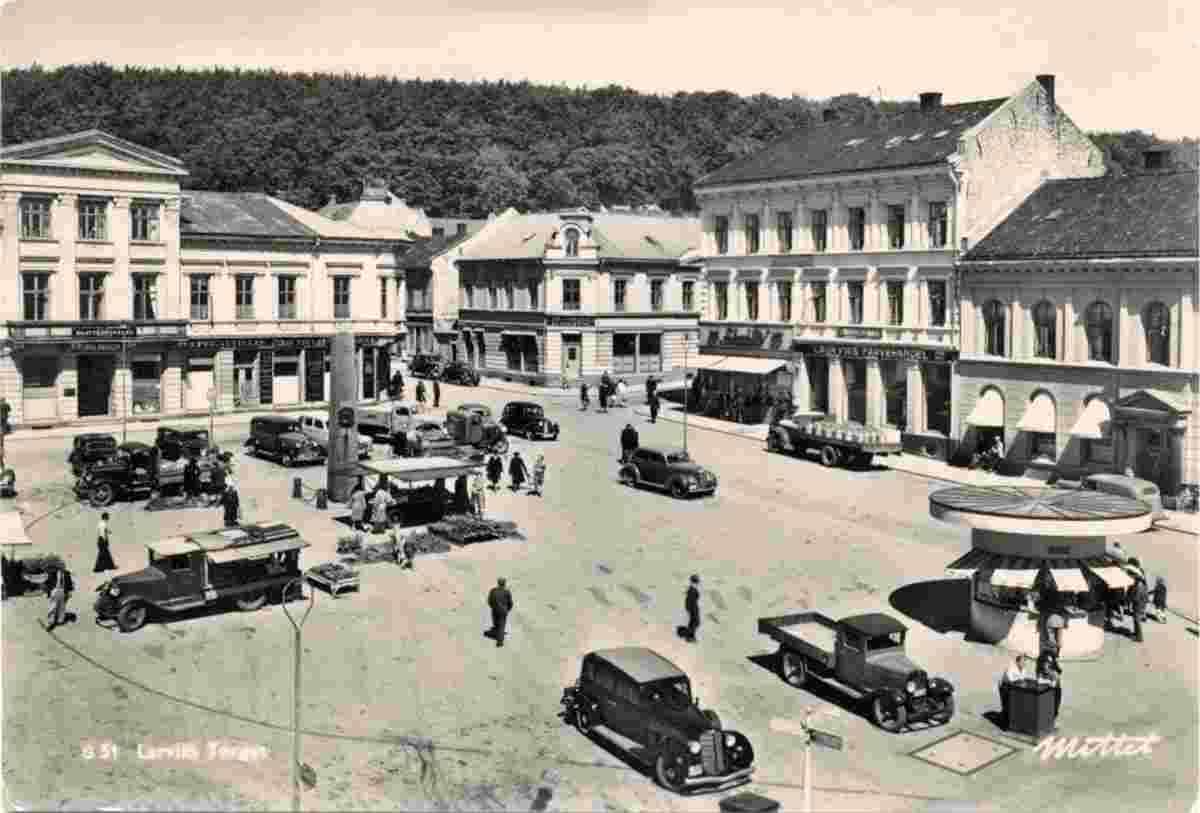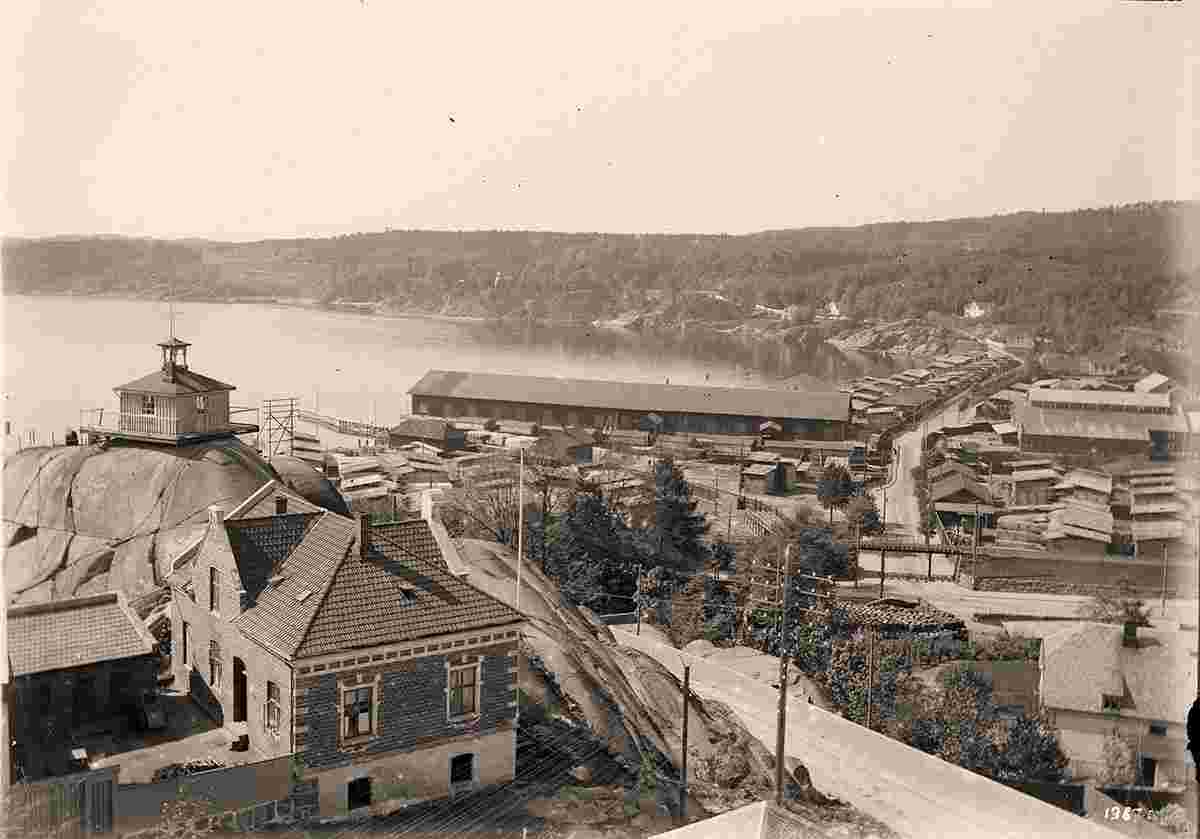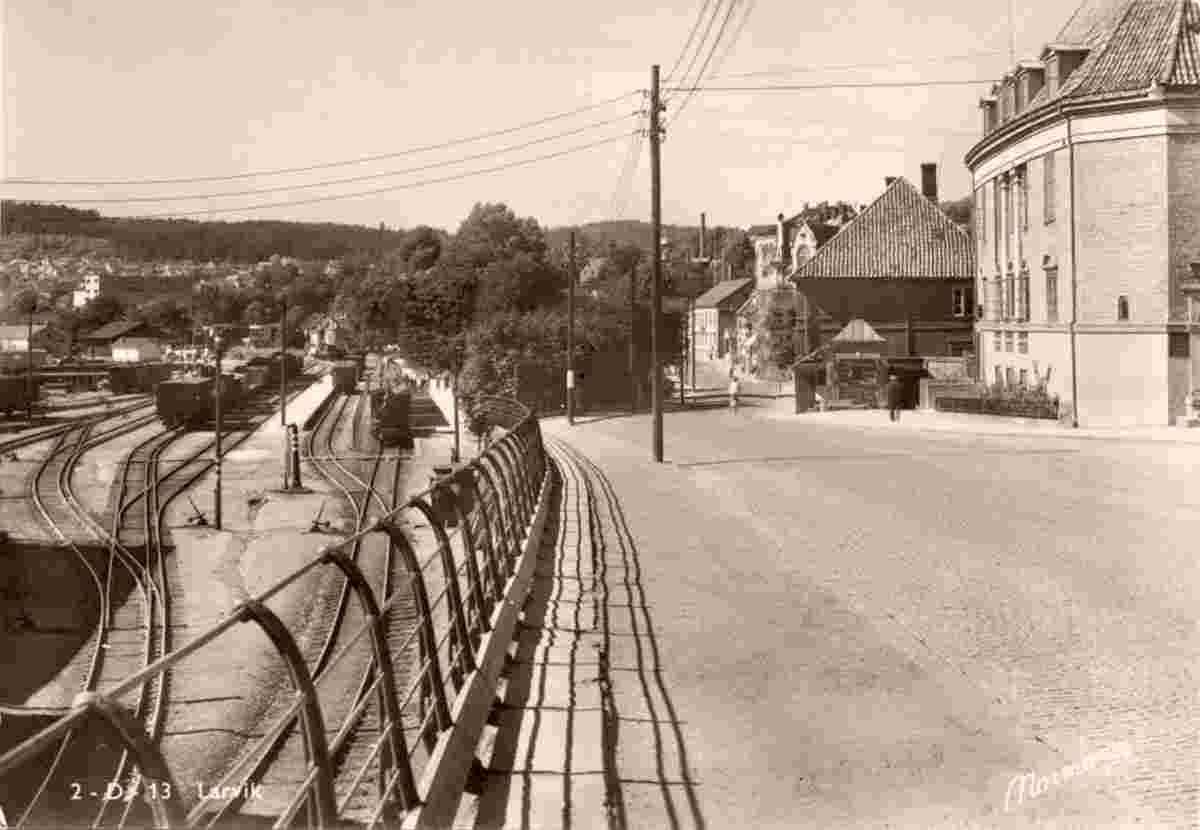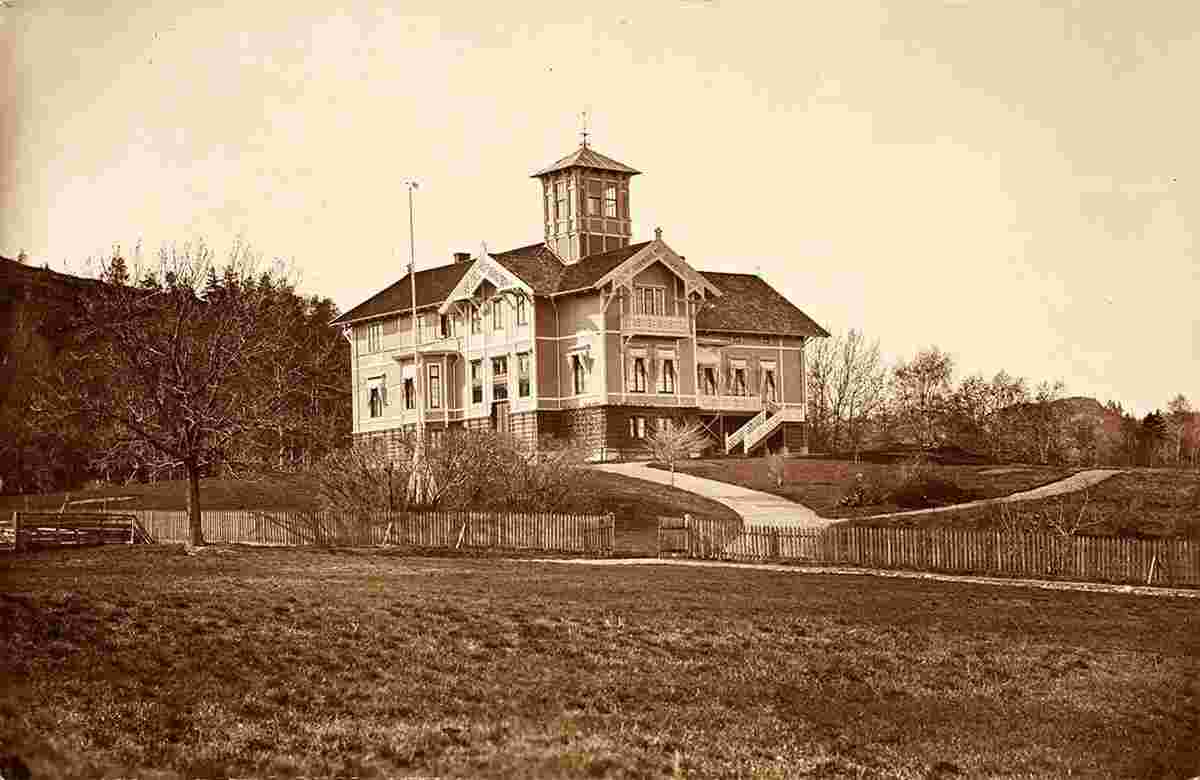Historical and old photos of Larvik, Vestfold and Telemark
HistoryVarious remains from the Stone Age have been discovered in Larvik, for instance by Torpevannet by Helgeroa village. Raet goes through all of Vestfold County before peaking out of the ocean in Mølen. Ancient peoples have carried rocks from Raet and constructed vast numbers of burial mounds at Mølen. During the Roman Iron Age, ancient peoples erected a stone monument resembling a ship at Istrehågan, one of Norway's greatest remains ("oldtidsminne") from prehistoric times. Immediately across the Sandefjord border by Istrehågan is Haugen farm, which is the largest petroglyph site in Vestfold County. Kaupang in Skiringssal is an archeological site where archeologists first discovered burial mounds, and later uncovered the remains of an ancient town. It is now known as the oldest known merchant town in Norway. There were international trade from a bay in Viksfjord, few kilometers east of Larvik, over 1,200 years ago. Skiringssal has remains from the oldest town yet discovered in the Nordic Countries, and it was one of Scandinavia's earliest urban sites. The city of Larvik was a 19th-century spa community, home of Larvik Bath. The spa welcomed several members of government and also Russian oligarchs. The royal family, King Haakon VII and Queen Maud, vacationed at Larvik Bad in 1906. The spa also welcomed Bjørnstjerne Bjørnson in 1909, who wrote some of his lasts poems in Larvik, and Knut Hamsun in 1917. Hamsun wrote his novel Growth of the Soil in Larvik, which later earned him the 1920 Nobel Prize for Literature. Larvik received market town status in 1671. The city of Larvik (in contemporaneous Danish spelling: Laurvig) was founded in 1671 by Ulrik Fredrik Gyldenløve, who became the first count of Laurvig. The count's residence, "Herregården", can still be visited today. Larvik houses the Treschow estate, Fritzøehus, which is currently owned by the heirs of Mille-Marie Treschow, reportedly "Norway's richest woman". The Treschow estate was created in 1835 when Willum Frederik Treschow bought the county from the Danish crown, who in turn had bought the county from the local consortium "grevlingene", four local entrepreneurs who proved unable to manage the ownership financially (the consortium had bought the county from the Danish crown in 1817 originally, the crown taking over the county when the last of the counts had to sell it because of debt). Larvik, along with neighbouring Sandefjord and Tønsberg, were the three dominant whaling cities of Norway in the late 19th and early 20th centuries. Origin: en.wikipedia.org | ||||||||||||
 |
Historical and old photos of Larvik, Vestfold and Telemark
Historiske og gamle bilder av Larvik, Vestfold og Telemark |
| Main page • Countries of Europa • Cities of Norway |
| Robinson Rd, CB 13862 Nassau, NP, The Bahamas |







